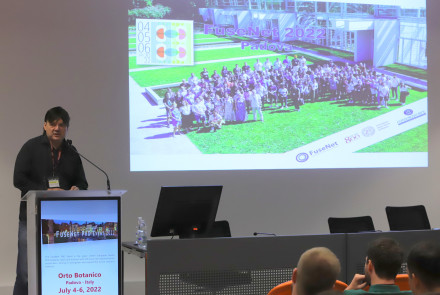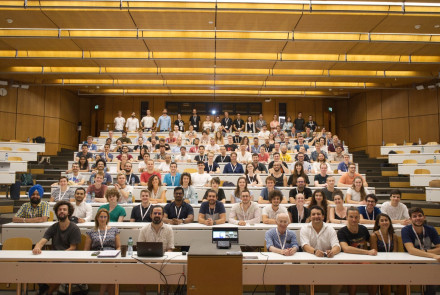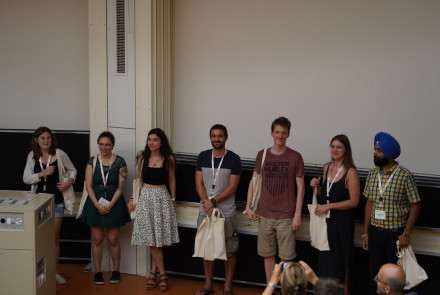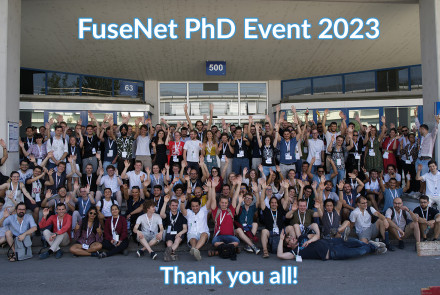The EFDA roadmap: Fusion Electricity to the European grid by 2050!
A realistic approach that gives Europe fusion electricity in the 2040s
Last month, the European Fusion Development Agreement (EFDA) has released a roadmap to the realisation of a supply of fusion electricity to the grid by 2050. It is an ambitious roadmap, but at the same time realistic in its recognition of important problems that still need to be overcome to make commercial fusion happen. Through a goal-oriented approach, the roadmap transforms these problems into eight different missions, aimed at resolving critical aspects for reactor application.
An important role for education and training
The roadmap also calls for changes in fusion education and training. It recognizes the importance of a good human resource strategy, to prepare engineers for the transition of the fusion programme from a science-driven, lab-based experiment, to a technology-driven, industry-based project.
With a similar view to the future, the FuseNet association aims to prepare the next generation of students with the required competences that are needed for this paradigm shift in fusion education and focuses on involving industry in that process.
[[{"type":"media","view_mode":"media_original","fid":"891","attributes":{"class":"media-image","height":"210","id":"2","style":"height: 210px; width: 480px;;;;;;;;;","typeof":"foaf:Image","width":"480"}}]]
Two more periods beyond the Horizon
The roadmap covers three periods: The upcoming European Union's research and innovation programme called Horizon 2020, the years 2021-2030 and the time between 2031 and 2050.
- 2014-2020: In the first period, termed Horizon 2020, ITER is the key facility of the roadmap as it is expected to achieve most of the important missions and associated milestones on the path to fusion power.
While this phase is the key element of the roadmap, it should be noted that its success depends on how announced budget cuts for Horizon 2020 will be implemented. On Feb. 09, 2013, the EU heads of states allocated a budget of €70.9 billion rather than the estimated €80 billion needed for the overall research programme, in which the fusion programme has its part.
- 2021-2030: The second period is focused on maximising ITER exploitation and on preparing the construction of a demonstration power plant DEMO. In this phase, most of the eight missions need to be accomplished in order to be ready for the third phase, in which DEMO is constructed.
- 2030-2050: DEMO is foreseen to start operation in the early 2040s and will be the first fusion reactor to supply a few hundred Megawatts of net fusion electricity to the grid. Building and operating DEMO, including a demonstration of high plant availability, is the subject of the last roadmap phase.
[[{"type":"media","view_mode":"media_original","fid":"889","attributes":{"class":"media-image","height":"181","id":"2","style":"height: 181px; width: 480px;;;;;;;;;","typeof":"foaf:Image","width":"480"}}]]
For each of the eight missions (FuseNet will soon publish an in-depth article on these 8 challenges), the roadmap reviews the current status of research, identifies open issues, proposes a research and development programme and estimates the required resources.
Furthermore, the roadmap points out the needs for basic research, to intensify industrial involvement, and to seek all opportunities for collaboration outside Europe. According to Dr Francesco Romanelli, EFDA Leader, this pragmatic approach to an ambitious program should maintain Europe in its leading position in the field, at a reasonable cost.
Preparing a new generation of engineers
In the course of the roadmap implementation, the fusion programme will move from being laboratory-based and science-driven towards an industry- and technology-driven venture. [[{"type":"media","view_mode":"media_original","fid":"892","attributes":{"class":"media-image","id":"2","style":"float: right; margin: 20px 10px;;;;;;;","typeof":"foaf:Image"}}]]We therefore not only need the best fusion scientists, but also need to prepare the best young engineers to join the ITER and DEMO projects.
In line with the mission of Fusenet, the roadmap recognizes that fusion laboratories and universities play a key role in providing training and education in fusion science and technology, and that involvement of industry is an important part of this.
The involvement of industry and a connecting role for FuseNet
The roadmap also mentions that industrial involvement already represents a turnover of ~6 billion euro over ~10 years and that involvement of industry in all technological and system aspects of the design is required to make ITER and DEMO successful.
FuseNet is planning to establish an Industry council and work together with industry in research and education: e.g. through match-making services for internships and vacancies, joined projects, providing in-company training, stimulating development of engineering skills on large devices, and preparing students with the engineering skills most needed by industry. By bringing the universities, research institutes and industry together, FuseNet wants to prepare European fusion education and industry for the challenges of this roadmap.
In chapter 9 of the EFDA roadmap you can read more on Industrial involvement.
Read more on Training and Education and on forming the generation ITER in chapter 7 of the EFDA roadmap:





